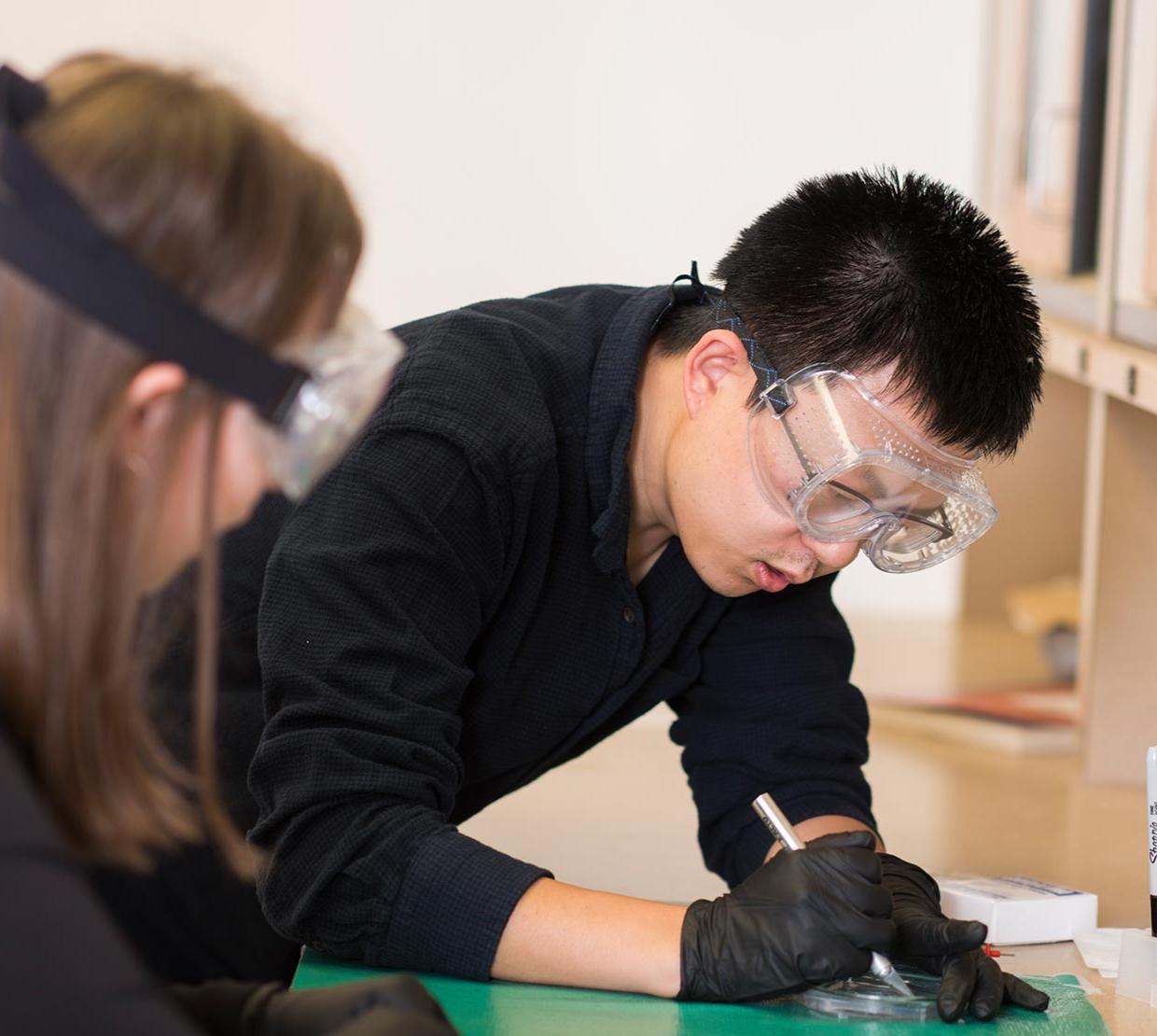The Science Research and Innovation Seed (SciRIS) awards, a competitive funding award in the College of Science to spur transformative research and innovation, were given to four multidisciplinary research teams.
The SciRIS program funds high impact collaborative proposals that build teams and pave the path for fundamental discoveries that create societal impact. The research teams comprise scientists from the College and beyond. The awards range from $10,000 to $125,000 for various stages of the proposal. They support individual faculty who seek to establish or augment research relationships with external partners, either inside or outside Oregon State University, in academia, industry, or other organizations both nationally and internationally.
Announced November 2019, the award-winning teams work on research projects in the areas of physical and organic chemistry, materials science, human health and the development of diagnostic tools.
Assistant Professor of physics Bo Sun will investigate the factors and consequences giving rise to a key process driving cancer metastasis: phenotypic transitions in cancer cells whereby a terminally differentiated cell can be forced to switch states (phenotype). This type of phenotypic plasticity in cancer cells enables them to acquire more aggressive phenotypic characteristics that make the cancer resilient to chemotherapy.
Scientists from the University of California, San Diego and Northeastern University will collaborate with Sun to apply quantitative experimental methods as well as machine learning and computational tools to investigate the plasticity of metastatic cancer cells.
Recent breakthroughs by Sun and his collaborators have shown that breast cancer cells metastasize through distinct cellular mechanisms and structures. Sun’s proposal received an award of $10,000 to help the team carry out further research that will contribute to a comprehensive understanding of the underlying regulatory mechanisms driving phenotypic plasticity in cancer progression, and new cancer screening and therapeutic strategies that specifically target phenotype transitions. The research will also advance the frontiers of systems biology and biophysics.
Oregon State biochemists Ryan Mehl, Rick Cooley, physicist Weihong Qiu, and Chris Cebra and Shay Brach from OSU’s Carlson College of Veterinary Medicine received a SciRIS Stage-II award for their project “Chemically Functionalized Nanobodies.” Nanobodies are very small reactive parts of a unique antibody found only in the blood of sharks, camels as well as the blood of two species available in large quantities at OSU ‘s Veterinarian College: llamas and alpacas. Nanobodies can be engineered to become specialized carriers of drugs and developed into diagnostic agents.
The $75,000 grant will enable the researchers to engineer nanobodies that can specifically bind to oncogenic (potential to cause cancer) proteins, leading to better diagnosis and treatment of cancer. In the longer term, the project aims to transform the paradigm of cancer therapy by launching the technology for cancer cell specific nanobodies that will deliver highly specific radiation dose to the cancer cells with minimal effects on healthy cells.
Chris Beaudry, professor of chemistry, Victor Hsu, associate professor of biochemistry and Siva Kolluri in the College of Agricultural Sciences received the SciRIS Stage II $75,000 award to advance their research on analogs of Homoharringtonine (HHT) with improved pharmaceutical properties. HHT is a plant alkaloid isolated from the plum yew Cephalotaxus harringtonii grown in Asia. It was approved for use in the U.S. in 2012 for the treatment of chronic myeloid leukemia.
HHT shows great promise as a starting point for the development of new medicines for multiple forms of cancer besides leukemia, however it is highly expensive and difficult to acquire both as a chemical and as a medicine. Beaudry and his collaborators will work on developing the technology for an efficient chemical synthesis of HHT which will quadruple the chemical yield. They will also develop analog or comparable versions of designed HHT-compounds that can be tested for effectiveness against several types of cancer cells, with the potential to lead to the development of exceptionally powerful cancer-fighting molecules.
Matthew Graham, associate professor of physics, and Paul Cheong, associate professor of chemistry, received a $10,000 SciRIS Stage I award for their project related to photovoltaic and thin film display transistors (TFT) that are used on television sets, computer screens and mobile phones.
By teaming together the Graham and Cheong labs have shown how their unique capabilities can be adapted to solve problems that even the world’s largest conglomerates are ill-equipped to tackle. Their novel microscope effectively addresses several industry-relevant thin film challenges related to the performance of photovoltaic or semiconducting materials. The SciRIS award will enable the scientists to continue refining their research on TFT performance materials.
Established in 2018, the SciRIS awards have supported several significant research projects that span molecular biophysics, marine biology, metagenomics and medical chemistry. They have contributed to acceleration of research at OSU, and supported scientists on their journey to move basic research ideas and discoveries from the lab to applications and practical solutions.




